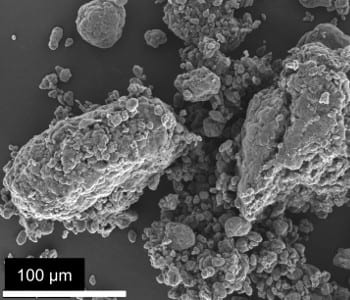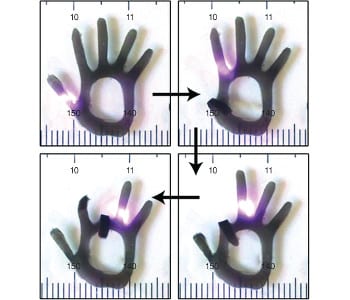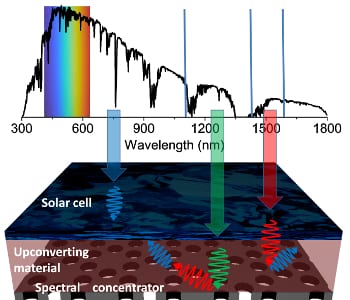Researchers have combined self-assembled colloid monolayers and the dynamic shadowing growth technique to fabricate arrays of Swiss roll nanostructures.
Light-sensitive polymers for controlled gene silencing
New research describes the use of polymers that can bind siRNAs into nanoscale assemblies that do not disassemble until they are irradiated with UV light.
Controlling cell gene expression with hydrogels
Researchers have developed a hydrogel system containing a spatial gradient of siRNA and studied its effects on encapsulated cells.
Bioinspired magnetic nanoparticles
A group seeks to reproduce the nanoparticle-synthesizing ability of magnetotactic bacteria.

Deagglomeration of carbon nanotubes
Researchers have developed a method for breaking up CNT bundles to deliver individual nanotubes using surface acoustic waves in a piezoelectric substrate.

Protein-based bionanomaterial design
UC Berkeley researchers have published an overview of the use of mammalian elastin, collagen, insect-derived silk and resilin in biomaterials design.
Targeted killing of tumor cells with cancer nanotherapeutics
Paolo Netti and co-workers have designed and characterized model tumor activated polystyrene nanoparticles (TAP-NPs) that release cytotoxic drugs.

Spectral concentration improves solar cell efficiency
A research consortium from the UK, Spain, France and Germany is using photonic crystals to improve silicon photovoltaic performance.
Examining quantum size effects in silicon
Experiments examine the scale at which strong quantum effects emerge in silicon nanocrystals.
Theranostics from a single nanoparticle platform
Researcers construct a multifunctional theranostic nanoplatform that gathers five diagnostic and therapeutic functions into one single nanocomposite.










